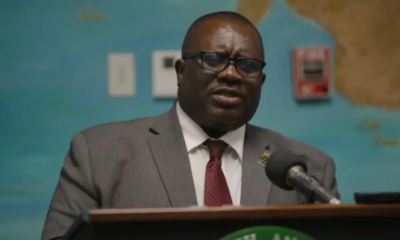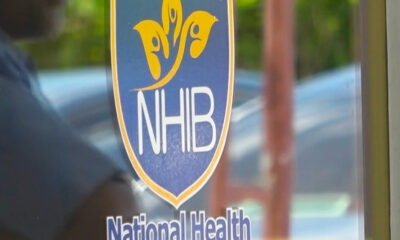By Dana Malcolm
Staff Writer
#TurksandCaicos, March 2, 2023 – At eleven years old Stephanie Suazo used to play a game with her mother Myriam, pretending to be asleep in bed so her mother would come over and tickle her till she laughed; but on January 29th 2020 when Myriam tickled her daughter she didn’t move, and blood was dripping from her mouth. Within hours she was declared dead by medical personnel. It seemed impossible, Myriam told us, because only the day before she had taken her daughter to the Cheshire Hall Medical Centre where she was assured her daughter was not seriously ill.
TUESDAY JANUARY 28th, 2020.
Over the phone and with palpable sadness, Myriam relived the moments, saying she had taken the day off that Tuesday and went to the hospital around 6:30 a.m. She waited with Stephanie for around two and a half hours before they could see a doctor and when they finally did,
“[The doctor] just looked at her and asked her how she was feeling and looked at her throat– [the doctor] said maybe she’s coming down with the cold and [prescribed] her some antibiotics, paracetamol and something for her throat, and then said to me, she should be able to go back to school on Thursday.”
She wasn’t okay.
In fact, her autopsy would eventually reveal that Stephanie had viral myocarditis unbeknownst to Myriam and undetected by the doctor.
Allowed to take Stephanie home, the unsuspecting mother, armed with chicken soup and medication prescribed by the TCI Hospitals’ physician, fed and medicated her child with the belief that she would be fine by morning.
As she shared the events, despite holding back tears, Myriam was clear and coherent and recalled with painful precision, the worst day of her life.
WEDNESDAY JANUARY 29th, 2020
Recently hired at the bank and not wanting to take too many days off, Myriam explained she had arranged for her close friend to take care of Stephanie while she went to work. After feeding her daughter and giving her the prescribed medication, Myriam says she made sure Stephanie was comfortable being without her for the day, kissed her and left.
“When I got to work, I told my supervisor that I was not going to take lunch because I wanted to leave early. It‘s just how I am. If I know she’s not well, I can’t be at peace.” she said.
But by around 4 pm, Myriam got a call from her friend who put Stephanie on the phone, she complained of a stomach ache and Myriam immediately made arrangements for them to go to Graceway Medical Centre, but they never made it.
The trip for a second opinion never happened because once Myriam got home intending to head to the doctor (after another phone call in which her daughter complained of ‘feeling cold’) her friend informed, ‘Stephanie was asleep.’ Knowing her daughter’s little game, Myriam went in to tickle her and realized something was very wrong.
“I called her: I said ‘baby’ and she didn’t respond so I knew she was waiting for me to tickle her. I tickled her and she didn’t respond.” Myriam explained, “I put my hand under her head and then I took her in my arms, that’s when I saw the blood coming out of her mouth. I started screaming ‘my baby my baby’.”
saw the blood coming out of her mouth. I started screaming ‘my baby my baby’.”
She immediately called 911 requesting an ambulance, but Myriam says they took too long to arrive.
“I gave them the address over and over– they took forever. I was just screaming so my friend was there doing CPR. [my friend] was pressing her chest and blood was coming out of her mouth. The police arrived first and they continued doing CPR for her and the ambulance still didn’t come. The police had to flash their sirens for them to find the house.”
After that everything was a whirlwind, a blur told she was not allowed in the ambulance, she was driven to the hospital by police and less than an hour after arriving doctors came to tell her that her little girl did not make it, allowing her to say goodbye.
“I was in shock- looking at her like this is not for real,” she told us in tears. “We were always together and I had to leave her at the hospital that night.”
Beside herself with grief Myriam tells us she didn’t sleep, she kept thinking that it wasn’t real, that her daughter would wake up. Her only solace, a kind police officer.
“I was still hopeful like she was going to wake up. I spent the whole night calling Albert, he’s a police officer” she explained to us “He was the one that arrived, and I called him all night. I told him please have someone check the morgue, maybe she might get up. And he told me okay I’m going to have someone check for you.”
The day following Stephanie’s passing Myriam says she was dragged to the police station, and continuously interviewed about Stephanie’s death.
THURSDAY JANUARY 30th 2020
“It was so weird, it almost seemed like they thought I had done something to my daughter; investigating me instead of the hospital. It was a nightmare.”
They took her daughter’s passport, laptop and phone and initially refused to give them back. The hospital released a press statement she explained, without really talking to her, and her daughter’s picture, unauthorized by her, was shared nationally. It was only through the help of a very close friend, whom she describes as more of a mother to her, that Myriam was able to recover her daughter’s personal effects from the police. She claims the police “lied” about finding suspicious searches on her laptop describing it all as a horror story.
The situation with the TCI Hospitals and Stephanie’s medical records was similar. We were told the documents were only received after a lot of running around, a lot of back and forth.
Today, Myriam feels her matter lacked urgent, respectful attention because she lacked clout.
“I’m just a regular person so it’s like her life doesn’t matter because of that, that’s how I feel. They completely disregarded me like I didn’t even matter. The autopsy results, the bloodwork, they didn’t want to give us anything so we had to keep chasing after them to give it to us.”
She feels that in the aftermath the hospital washed its hands of the incident making her out to be responsible, and now feels duped, like her faith in them was misplaced.
“I’m not God. I don’t know why it happened but I feel that at least I took her to the hospital. I feel like if they had just looked at her properly or done some examinations” she broke off “Don’t just look at her and say nothing is wrong with her. You prescribed her things, I go home and then she’s dead the next day? And everyone acts like it’s normal, it’s nothing.”
THREE YEARS LATER
Myriam continues to have concerns about the strength of the medication prescribed and administered to her daughter. On this three year anniversary, Magnetic Media is told that Stephanie’s toxicology report listed several medications as being in the child’s system including ACETAMINOPHEN and PHENIRAMINE which have documented cases, though rare, of cardiac toxicity.
“When the lady gave me the medication I remember telling her those are adult medications and she told me that once a child is 11 years old they start prescribing them adult medications.”
Three years later Myriam just wants justice for her daughter, but time is running out for her to file a case and she needs her daughter’s story to be heard. She said she tried to file a case and her first lawyer agreed to take it, had agreed she had a viable case and expressed suspicion regarding the autopsy results but suddenly backed out.
“Everyone I turn to, no one can help me. I went to another lawyer just the day before yesterday and he said I’m not going to lie to you, there are many people who have taken the hospital to court and they have failed. It’s the hospital and there’s nothing we can do about it.”
Stephanie’s autopsy states a probable cause of death as viral myocarditis, a type of heart disease caused when viral infections reach the heart inflaming its muscles and making it difficult to pump blood. Several infections can cause myocarditis including Influenza (flu) virus, Coxsackie virus, Parvovirus, Adenovirus and SARS-CoV-2, the virus that causes COVID-19.
causes COVID-19.
Myriam, in telling us about how pleasant and precious and fill of potential Stephanie was, says she is determined to be a champion for her child, even though she is no longer physically here.
“You will never know how it feels until it happens. It’s not going to bring her back but I want her story to be heard and people need to know that she was here. That she had dreams. She was a good and grateful person and so positive,” she said.
Now Myriam cannot bear to be in the place where her daughter passed away and every time she sees someone her daughter’s age, the broken-hearted mother wonders what could have been.
We have reached out to the hospital for answers to these burning questions and about a case which stunned the nation; a case which soon lost steam in the head to head challenge against the then unprecedented uniqueness of the Coronavirus Pandemic.
While TCI Hospitals, following our news report in TCI Top Stories (audio newscast) has responded to the mother with the intention of ensuring Myriam is supplied her daughter’s records; it was a short-lived hope for something more, as the family is already in possession of those records.
On the belief and allegation of her family that the death of young Stephanie Suazo back in 2020 was due to medical negligence or incompetence of some sort, we continue to await a formal statement from InterHealth Canada TCI Hospitals.


 Caribbean News7 days ago
Caribbean News7 days ago
 Caribbean News7 days ago
Caribbean News7 days ago
 Caribbean News1 week ago
Caribbean News1 week ago
 Caribbean News7 days ago
Caribbean News7 days ago
 Bahamas News7 days ago
Bahamas News7 days ago
 News7 days ago
News7 days ago
 Bahamas News1 week ago
Bahamas News1 week ago
 News7 days ago
News7 days ago




























